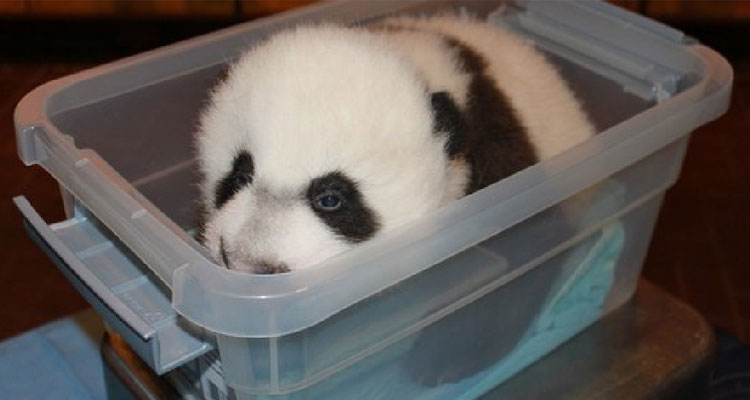The appeal of the Giant Panda has been prevalent lately as the National Zoo’s newest baby cub gets closer to making his public debut next month. Until then, we can all enjoy some particularly adorable shots of Bei Bei or watch him in action. Beyond being photogenic, the Giant Panda inhabits some interesting traits. We found the following facts about the Giant Panda to be the most interesting and surprising:
The Giant Panda is an introvert
The Giant Panda in general is not an extremely social animal outside of breeding. They might occasionally look to see what their brethren are up to, but only upon hearing a vocalization.
The Giant Panda wasn’t always considered a bear
Until 1995, it was believed that pandas were actually a type of racoon. Genetics testing and observation revealed that the panda is, in fact, a bear—though several adaptations make it unusual.
The Giant Panda has six ‘fingers’
Pandas indeed have six digits on the front paws, giving it an opposable thumb ideal for holding onto the stalks of bamboo which it consumes in great amounts.
The Giant Panda basically eats one thing
While other types of bears are typically omnivores or carnivores, pandas enjoy a steady diet of 99 percent bamboo. Bamboo isn’t particularly nutritionally dense, but it’s a prevalent and extremely rapid growing food source that can be taken advantage of.
The Giant Panda’s gender isn’t obvious at birth
The big boy or girl reveal is a little lackluster when it comes to the Giant Panda. That’s because external genitalia in bears doesn’t develop until they are a few months old, but there’s no need to wait that long to solve the mystery. According to the Smithsonian, the bear cub’s sex is determined through DNA analysis.
The Giant Panda’s reproduction is impacted by romance
According to National Geographic, Giant Pandas that are crazy about each other produce more cubs than panda couples without amorous feelings toward their mate. Mei Xiang and Tian Tian, the female and male pandas at Smithsonian’s National Zoo in Washington, D.C., apparently aren’t that fond of each other as all three of their cubs were conceived via artificial insemination after they failed to procreate naturally. Such an occurrence is common due to efforts to breed the rare animals in the hopes of eventually reintroducing them into the wild.
What do you and your family love about pandas?





































